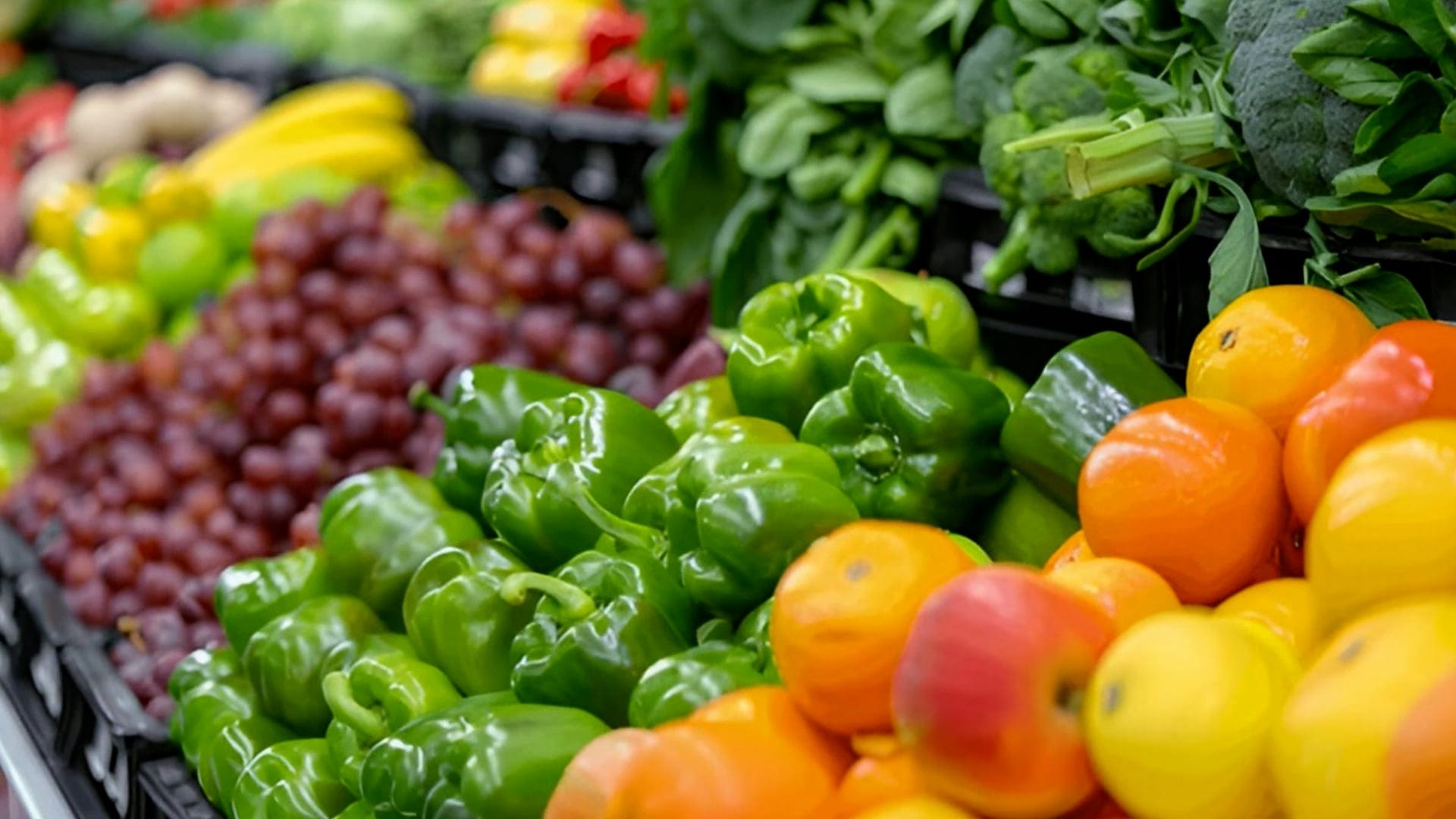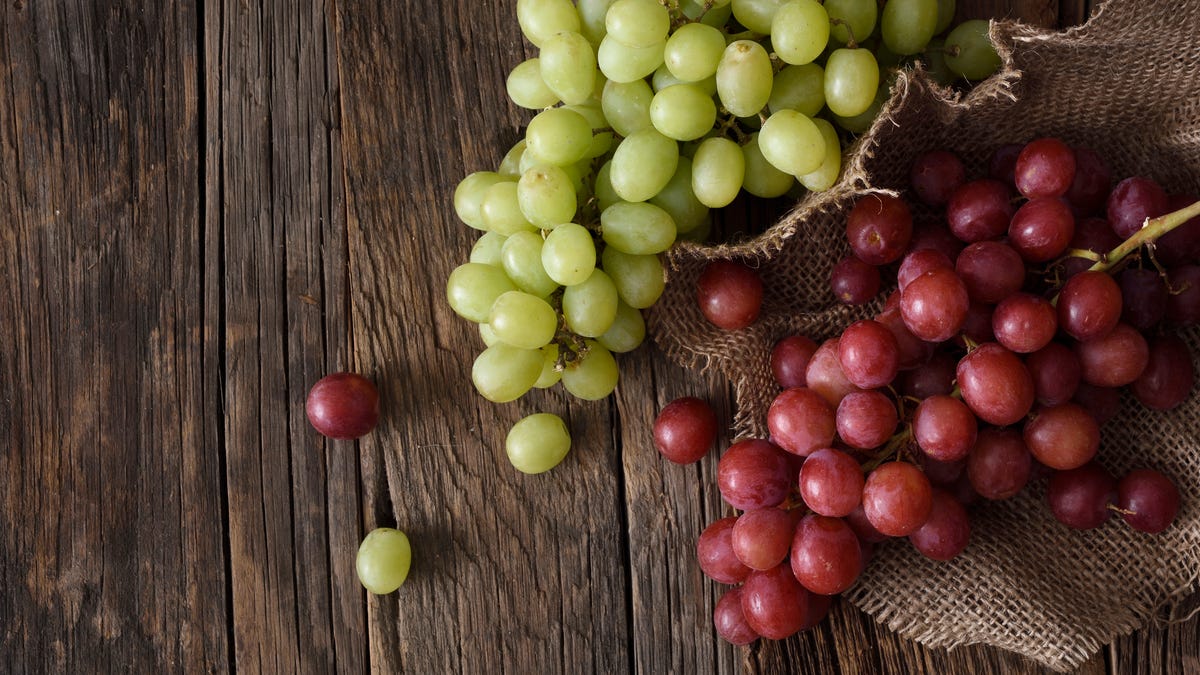
Why buying fruits and vegetables in season matters
If you buy perfect-looking strawberries but they taste like cardboard, it’s not you, it’s the season. Buying in season ensures better flavor, nutrition, and value.
unbranded – Lifestyle
Fruits have long held a place of prominence on our plates. Whether enjoyed plain as a snack, tossed into salads, blended into smoothies or baked into desserts, we love them for their vibrant color, natural sweetness, hydrating qualities and abundance of nutrients.
Grapes are among America’s favorite fruits, ranking just behind bananas, berries and apples, according to the International Fresh Produce Association‘s list of the top 20 fruits and vegetables sold in the United States.
“People love grapes for being a sweet and healthy treat that provide a great source of fiber, antioxidants and key nutrients,” says Kristina Cooke, a licensed nutritionist and registered dietitian with the Academy of Nutrition and Dietetics. Their simplicity is also appealing – just rinse and pop a few in your mouth. And grapes have the added advantage of serving as the foundation for raisins, juice and of course, wine.
Here’s a look at how many varieties of grapes exist, why the fruit is so good for you and when moderation still matters.
How many varieties of grapes are there?
Estimates vary, but reports indicate there are some 10,000 distinct grapevine varieties cultivated worldwide. That includes grapes used for wine, table consumption, raisins and juice production – though only a small percentage are commercially significant.
In fact, just 13 grape varieties account for more than 1/3 of the world’s vineyard area, while 33 others cover about half. Cabernet Sauvignon, Merlot and Chardonnay grapes are among the most popular for winemaking.
No matter what they’re used for, “grapes come in many colors, including green, red, black, yellow, pink and purple,” says Abbie Gellman, a registered dietitian and New York City–based chef. “And table grapes also have different flavor profiles – from ‘cotton candy’ to ‘grape jam’ to ‘champagne’ and many others.”
Among the most popular U.S. table (eating) varieties are Thompson Seedless (green), Concord (deep blue or purple), Sweet Jubilee (black) and Flame Seedless (red), and “99% of the grapes in the United States are grown and harvested in California, due to the dry heat,” says Cooke.
The U.S. fresh-grape season typically runs from late July through October, with some regions extending production of certain varieties through November or even January.
Are grapes good for you?
Regardless of the variety you choose, grapes pack an impressive array of nutrients and bioactive compounds that support overall health. For instance, data from the U.S. Department of Agriculture shows that just over 1/2 cup (100 grams) of green, seedless grapes provide roughly 80 calories, 18 grams of carbohydrates, 1.2 grams of dietary fiber and notable amounts of key vitamins and minerals, including copper, potassium, vitamin K and vitamin C – plus smaller amounts of B vitamins, vitamin A, phosphorous and magnesium.
“Grapes are an especially great source of copper, which helps create energy in the body,” says Cooke, “and vitamin K, which is important for blood clotting.” And the high amount of vitamin C in grapes supports immune function and helps the body absorb iron.
Their high water and fiber content make grapes particularly good for hydration and digestive health, while also helping replace higher-calorie snacks.
“And grapes are packed with flavonoids, which are powerful antioxidants,” says Gellman. Typically, “the stronger or darker the color of the grape, the higher the concentration of flavonoids,” she says.
Grapes also contain resveratrol, a polyphenolic compound found primarily in the skins of grapes, “which helps fight aging and may slow the progression of some cancers,” says Cooke.
Can you eat grapes every day?
While grapes are overwhelmingly good for you, a few considerations are worth noting. For one, their sweetness comes from natural sugars such as fructose and glucose, so eating large amounts can raise overall calorie and sugar intake – especially for those managing weight, insulin sensitivity or blood-glucose levels.
Their fiber content can also cause temporary digestive discomfort. “Hitting your GI tract with a double or triple portion of fiber can cause bloating, gas or other GI issues in some people,” says Gellman.
And since grapes are a significant source of vitamin K, “those on blood thinners should speak to their medical provider to see if they’re safe to consume while on blood-thinning medications,” says Cooke. The same goes for individuals with kidney concerns, as grapes are relatively high in potassium.
So long as these factors are kept in mind, grapes can absolutely be part of a balanced diet.

